Solanum microdontum
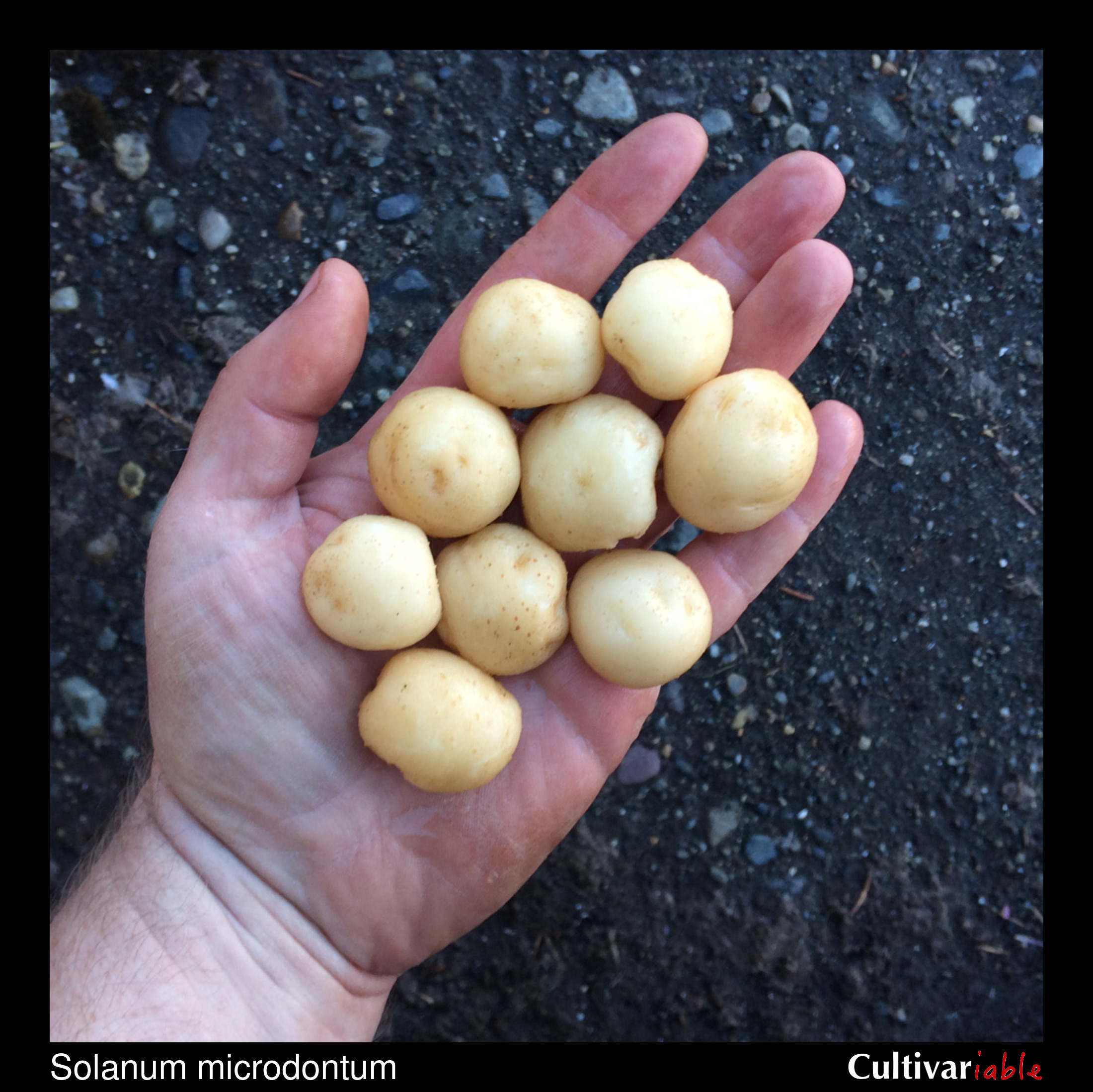
| Common Names | Papa de zorro |
| Code | mcd |
| Synonyms | S. gigantophyllum, S. simplicifolium |
| Clade | 4 |
| Series | Tuberosa |
| Ploidy | Diploid (2x) |
| EBN | 2 |
| Tuberization Photoperiod | Unknown |
| Self-compatibility | No |
| Nuclear Genome | A |
| Cytoplasmic Genome | Unknown |
| Citation | Bitter: Repert. Spec. Nov. Regni Veg. 10: 535. 1912. |
Description
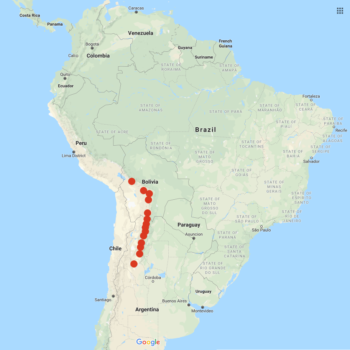
Solanum microdontum is primarily a Bolivian species, extending into northern Argentina. Plants up to three feet tall. Stolons three feet long or more. Tubers small, less than an inch, round, light gray purple. Flowers white to light purple. Berries round, a bit less than an inch in diameter.
The specific epithet, microdontum, means “small teeth,” referring to the leaf margins. It is formed from the Greek words “micro,” for “small,” and “odous,” for “tooth.” While there is no completely standardized pronunciation for scientific names, the most common way to pronounce this species is probably so-LAY-num my-kroh-DON-tum.
This species can survive frosts down to 27 degrees F (-3 C) (Li 1977). Vega (1995) found that this species is less frost tolerant than domesticated potato.
Kiszonas (2010) measured the tuber pH of wild potato species and found that S. microdontum has the lowest pH measured at 5.59. It is not known if tuber pH has any agronomic significance.
Some accessions of this species are resistant to tuber greening.
Subramanian (2017) found that at least some accessions of this species have unusually low calcium content.
| Condition | Type | Level of Resistance | Source |
|---|---|---|---|
| Alternaria solani (Early Blight) | Fungus | Somewhat resistant | Jansky 2008 |
| Drought | Abiotic | Somewhat resistant | Machida-Hirano 2015 |
| Fusarium sambucinum (Fusarium Wilt) | Fungus | Resistant | Lynch 2003 |
| Globodera pallida (Pale Cyst Nematode) | Invertebrate | Not resistant | Castelli 2003 |
| Globodera pallida (Pale Cyst Nematode) | Invertebrate | Not resistant | Bachmann-Pfabe 2019 |
| Globodera rostochiensis (Potato Cyst/Golden Nematode) | Invertebrate | Not resistant | Castelli 2003 |
| Heat | Abiotic | Somewhat resistant | Machida-Hirano 2015 |
| Meloidogyne spp. (Root Knot Nematode) | Invertebrate | Somewhat resistant | Machida-Hirano 2015 |
| Myzus persicae (Green Peach Aphid) | Invertebrate | Somewhat resistant | Machida-Hirano 2015 |
| Ralstonia solanacearum (Bacterial Wilt) | Bacteria | Somewhat resistant | Machida-Hirano 2015 |
| Pectobacterium carotovorum (Blackleg/Soft Rot) | Bacteria | Somewhat resistant | Chung 2011, Machida-Hirano 2015 |
| Phytophthora infestans (Late Blight) | Fungus | Not resistant | Gonzales 2002 |
| Phytophthora infestans (Late Blight) | Fungus | Somewhat resistant | Machida-Hirano 2015 |
| Phytophthora infestans (Late Blight) | Fungus | Somewhat resistant | Bachmann-Pfabe 2019 |
| Phytophthora infestans (Late Blight) | Fungus | Some resistance | Karki 2020 |
| Potato Leaf Roll Virus (PLRV) | Virus | Somewhat resistant | Machida-Hirano 2015 |
| Potato Virus Y (PVY) | Virus | Somewhat resistant | Cai 2011 |
| Synchytrium endobioticum (Wart) | Fungus | Somewhat resistant | Machida-Hirano 2015 |
Glykoalkaloid content
Images
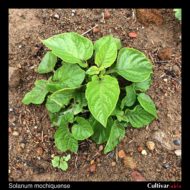 |
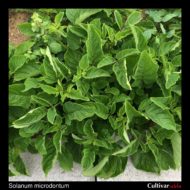 |
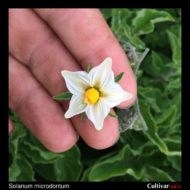 |
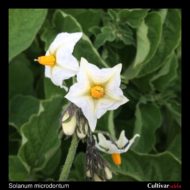 |
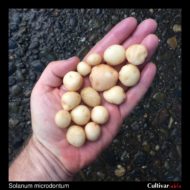 |
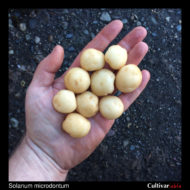 |
||
Cultivation
I have found seeds of this species easy to germinate using the standard conditions for S. tuberosum. The hypocotyls of this species are dark red/purple.
Towill (1983) found that seeds of this species stored at 1 to 3 degrees C germinated at 100% after 19 years.
Bamberg (1995) found that at least some accessions of S. microdontum flower better at high temperatures than under typical temperate growing conditions. Flowering was better when greenhouse temperatures exceeded 100 degrees F for several hours during the day.
Bamberg (2017) found a 158% increase in seed set in this species with supplemental applications of liquid fertilizer at four and seven weeks after potting.
Breeding
Crosses with S. tuberosum
This species has been included in the pedigrees of at least 15 hybrid cultivars of Solanum tuberosum. The first variety to use S. microdontum appears to be Conestoga (Plaisted 1989).
| Female | Male | Berry Set | Seed Set | Germination | Ploidy | Source |
| S. tuberosum | S. microdontum | Low | Low | Jackson (1999) | ||
| S. microdontum | S. tuberosum | None | None | Jackson (1999) | ||
Crosses with other species
Jackson (1999) found 4-30% 2n pollen in varieties of this species.
| Female | Male | Berry Set | Seed Set | Germination | Ploidy | Source |
